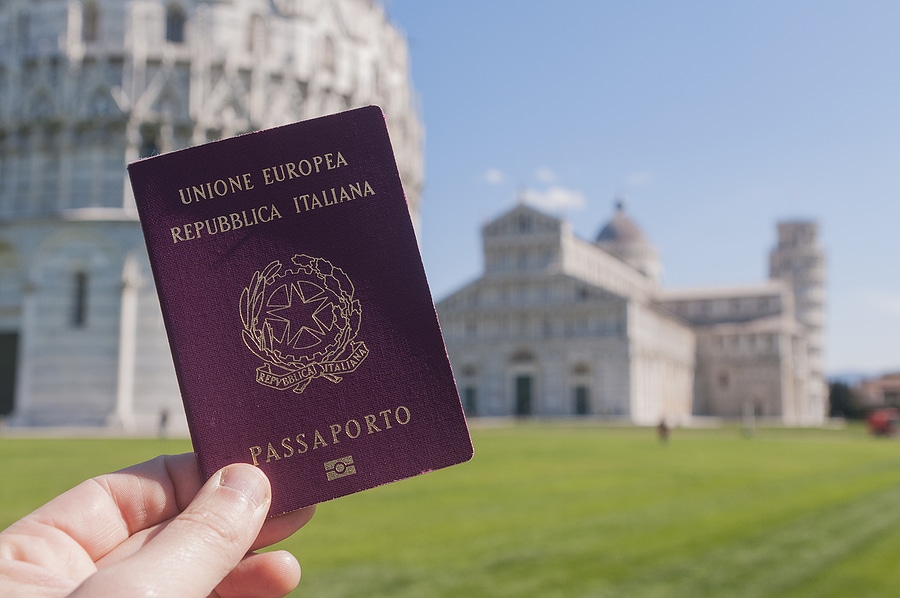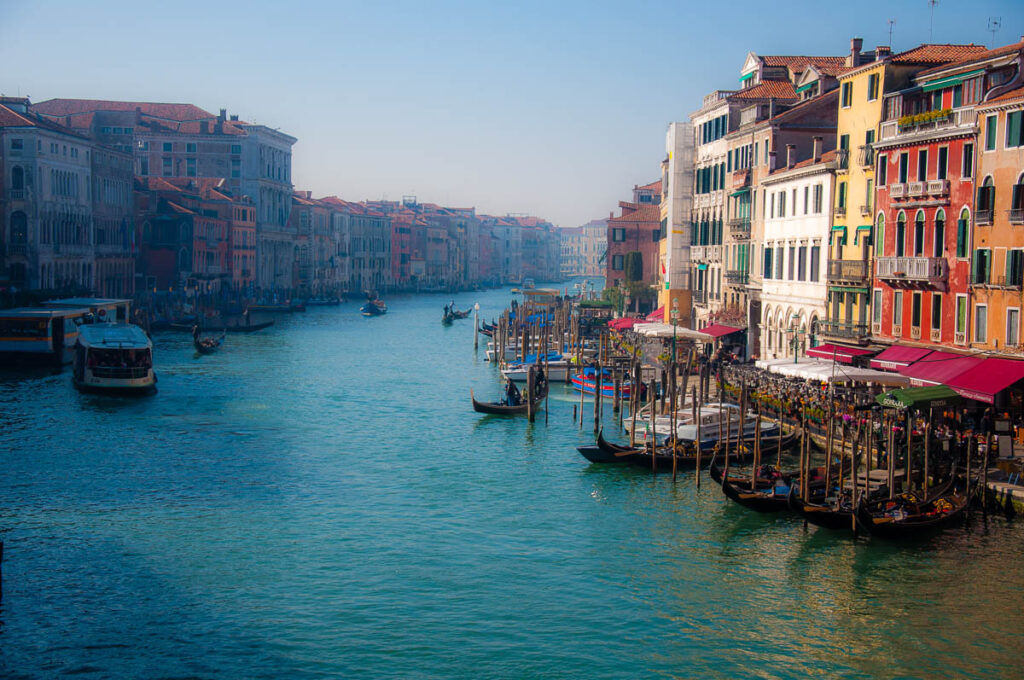
So, you want to get Italian dual citizenship? We don’t blame you. After all, imagine waking up to the serene beauty of the Italian countryside, the aroma of authentic Italian cuisine wafting through the air, and the echo of an ancient, rich culture serenading your mornings. Or—if you’re not much of a traveler—imagine just having the freedom and security of an Italian passport in hand. Think of in these trying times as a smart backup plan. For those of Italian descent, this isn’t a far-off fantasy but a birthright that might be just a few steps away.
Yet, amidst this enticing prospect lies a complex path, tangled in bureaucratic vines and legal pathways that seem daunting, confusing, and inaccessible. For many aspiring dual citizens, the dream is clear, but the path is obscured.
This post will serve as a basic guide to start the process of getting Italian dual citizenship. We’ll talk about how you can claim Italian citizenship by descent, making each step—from understanding eligibility to enjoying all the associated benefits—distinct, manageable, and in easy-to-digest bite-sized pieces.
Let’s get started!

Understanding the Basics
What is Italian Citizenship by Descent?
Italian citizenship by descent is made possible by the principle of ‘jure sanguinis,’ a Latin term meaning ‘by right of blood.’ In Italy, bloodlines can be more significant than birthplaces, opening doors for descendants of Italian ancestors to claim their place in Italy’s rich legacy.
Because of Italy’s jure sanguinis laws, a child born anywhere in the world to at least one Italian citizen parent is automatically an Italian citizen at birth. What’s more, once this citizenship successfully “makes the jump” from Italy to the US, it generally gets passed down forever.
This is how descendants of the Italian diaspora can be eligible for Italian citizenship even one, two, three, or four generations removed from their last Italian-born ancestor.
Recognition vs Naturalization: an Important Distinction
Contrary to the naturalization process that immigrants undergo to become citizens, Italian citizenship by descent isn’t a privilege to be earned or a status to be granted. It’s a recognition of an identity and right that has been inherent from birth. In other words, if you qualify, it is your birthright. You are not actually becoming an Italian citizen. Rather, you are asking Italy to make your citizenship (which you’ve had since birth) official.
This isn’t a traditional immigration process. It’s devoid of the intricate exams, language proficiencies, or means tests that characterize naturalization. Italian citizenship by descent is rooted in a principle that isn’t about earning a new identity but recognizing an existing one.
Eligibility Criteria
Four cardinal rules govern this path:
- Ancestor’s Presence: Your ancestor should have been alive on or after March 17, 1861, the date of the unification of the Kingdom of Italy. Before this date, there was no such thing as an Italian citizen. Therefore, if your ancestor died before Italy was a “thing,” he or she couldn’t pass on Italian citizenship to you.
- Naturalization Timing: If your Italian ancestor ever became an American citizen, it must meet two key criteria. It had to have been after July 1, 1912, and after the birth of their U.S.-born child.
- Non-naturalized Ancestors: If he or she never became an American citizen, you typically qualify automatically, albeit with exceptions.
- Female Ancestors: For those with women in the direct line, children born before January 1, 1948, prompt a court application for citizenship. This means that you’re still eligible (as long as you meet the above criteria), but the way you seek recognition of citizenship is different.
Benefits of Italian Dual Citizenship
Global Mobility
As an Italian citizen, the world unfurls its map to you. You can live, work, and study anywhere in the European Union without restriction.
Rich Cultural Heritage
You aren’t just a traveler but a citizen returning home. Italy’s art, history, and culture are no longer narratives to admire but a legacy to claim, explore, and enrich.
Healthcare and Education
Italy’s renowned and affordable healthcare and education aren’t distant dreams but accessible realities.
You Can Pass it On
If you’re eligible, so are your children. So is your spouse and in some cases, your spouse may automatically become a citizen when you do!
Getting Started on your Italian Dual Citizenship Application
When you apply for recognition of Italian dual citizenship, you need to prove in black and white that you are eligible. This means no DNA, word of mouth, or tattered old genealogical records you can pull from a trunk in the attic. Everything must be official.
You have to essentially recreate your family tree, showing a clear path from your qualifying Italian-born ancestor to you. To do this, you gather new, certified copies of various vital records including:
- Birth certificate(s)
- Marriage certificate(s)
- Death certificate(s)
- Naturalization certificate(s)
- Along with any other document(s) the consulate deems required in your case
How to Figure out Exactly What You Need
First, figure out which consulate has jurisdiction over where you live. This link is a helpful resource. Then, find that consulate’s website. Navigate to their citizenship by descent page. Each consulate has its own list of requirements. Study this list carefully, and start gathering everything in accordance.
Remember: you must obtain new, certified copies of everything. We’ll talk about why this is important below.
Translate Your Records into Italian
You can start translating your records into Italian as you gather them. Luckily, anyone can do the translations for you—even yourself if you speak Italian! However, we recommend choosing a professional translator. Sometimes the legalese on vital records can be tricky.
Simply take the certified copies of your records and scan them. Then, send those scans to your translator. He or she should be able to work off of them.
You can expect to pay anywhere from $30 to $75 a page on translations, depending on complexity, formatting, and length.
Apostille Your Records
Remember how we said above that you need new, certified copies of everything? This is why. Before your non-Italian records can be accepted in Italy, they must be legalized and made “official.” Here is where the apostille comes in.
An apostille is a separate cover sheet that gets tacked to the front page(s) of your documents. It is a uniform, standardized legalization that a bunch of countries, Italy and the United States included, have agreed to reciprocally accept.
You can get apostilles from the Secretaries of States’ Offices in the states where your documents were issued. For example, New York documents are apostilled in New York while California documents are apostilled in California.
Not all documents for your application need to be apostilled. To know which ones are required, be sure to consult your consulate’s specific checklist.

The Application Process
Consulate Appointments
Many years ago, it used to be easy to get a consular appointment. Now, because Italian dual citizenship is so popular, you will likely not snag one on your first try. But take heart: if you keep trying, you’ll eventually get one.
Common wisdom says to check for appointments at 12 am Rome time.
Application Submission
When you submit your file, one of three things can happen:
- It’s perfect and you have everything you need. The consulate will issue you a “protocollo” number and put you in the processing queue.
- It’s almost there, but not quite. You just need a few more documents for submission. The consulate will tell you in writing what is needed. This is usually referred to as homework. They will start a file for you, and you’ll have to send them the documents that are missing. Only when everything is complete will you be placed in the processing queue.
- Your file is severely lacking. In such case, the consular officers will return everything to you and tell you to make a new appointment. If they are in a good mood, they might give you homework and tell you to mail everything in rather than starting from zero.
Application Processing
The Italian government has up to 730 days to process your application. But, hey! Good things come to those who wait.
Just because the Italian consulate could take up to 730 days to approve your file doesn’t mean they absolutely will. But the advice we always tell people is to hand everything in, forget about it, and one day you’ll get a nice surprise: you’re officially Italian!
There are a number of things that go on behind the scenes during this part, but we won’t bog you down with the details.
The Italian Job: Obstacles that Can Make it Hard to Get Italian Dual Citizenship
Language Barriers
Ah, the melodious Italian language, as beautiful as it is complex! It’s all fun and games when you’re learning how to ask for the bill at a quaint Roman café, but throw in some legal jargon, and it’s a whole different ball game. For the non-Italian speakers among us, preparing documents and communicating effectively can turn into a game of lost-in-translation. It’s like trying to solve a jigsaw puzzle with half the pieces missing. And we haven’t even mentioned reading archaic Italian handwriting on family documents…
The Indiana Jones Expedition
Then there’s the quest for old records. Think of it as your very own Indiana Jones adventure, minus the hat and whip (unless that’s your style, no judgments here). Tracing back to your Italian ancestry means digging through old, and sometimes obscure, records. It’s not just a trip down memory lane but a journey through time, and let’s be real… not every record is just waiting there, ready to jump into your hands.
Bureaucracy at Its Finest
If patience is a virtue, then applying for Italian dual citizenship is your training ground to sainthood. The Italian bureaucratic process is akin to a slow dance where the music’s rhythm is unpredictable, and the dance steps keep changing. And spoiler alert— the consulate isn’t always in a rush, so be prepared to play the waiting game.
The Shape-Shifting Requirements
Just when you think you’ve got all your ducks in a row, surprise! The requirements decide to play musical chairs. Though there actually are official guidelines which state the documents you need, consulates are given carte blanche to interpret them. As a consequence, they can require documents that go above and beyond the bare minimum prescribed by law.
Sometimes it can feel like trying to hit a moving target, with consular officers sometimes interpreting requirements with a dash of creativity. One day it’s this document, the next day it’s another, and sometimes, it’s both, certified, translated, and delivered by a carrier pigeon (okay, maybe not the pigeon part).
The Light at the End of the Tunnel
But hey, it’s not all doom and gloom. Yes, the process can be as winding as the beautiful alleyways of Venice, but remember: each step takes you closer to those serene landscapes, rich culture, and the unmatched Italian lifestyle.
Every form, every queue, every seemingly insurmountable obstacle is just a stepping stone to the moment where you can proudly claim your Italian heritage. It’s a journey of reconnection, a narrative of rediscovery, and let’s face it… the bragging rights of being an Italian citizen are totally worth it.
So, chin up, future Italian citizen! Arm yourself with patience, a sense of humor, and maybe a bottle of fine Italian wine to ease the journey. After all, Rome wasn’t built in a day, but the wait makes the arrival all the sweeter. Cheers to the journey ahead! 🍷🇮🇹
